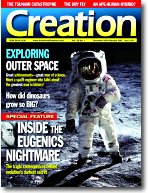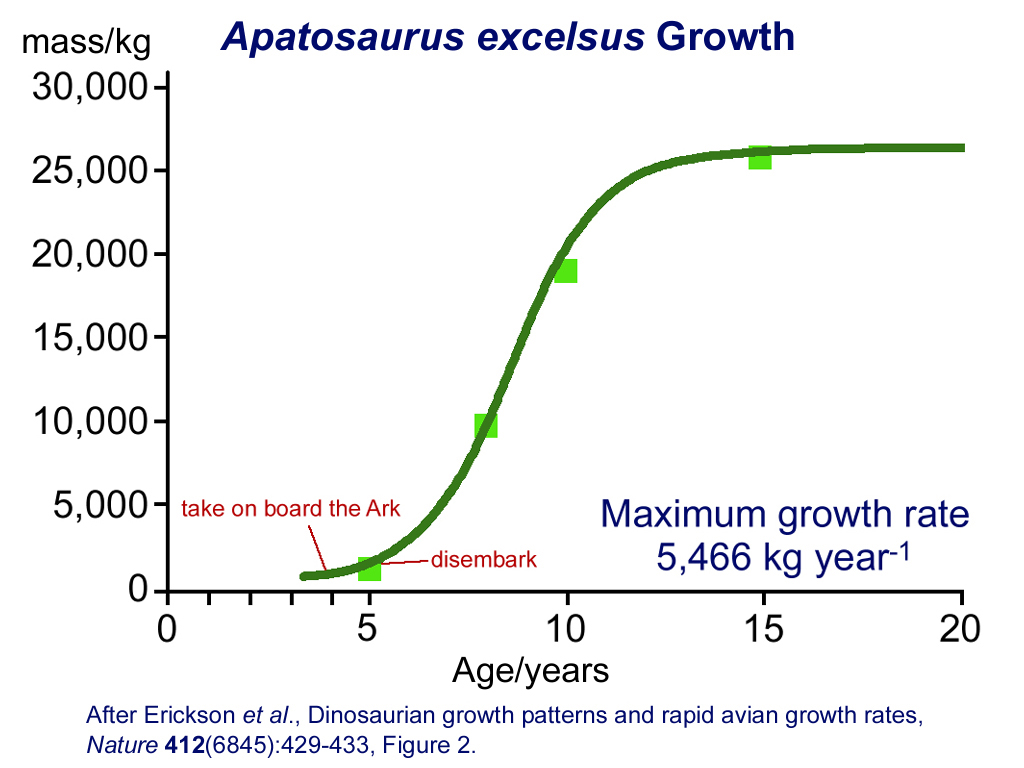Feedback archive → Feedback 2002
Dinosaur growth rates: Problem or solution for creationists?
23 September 2002
Although this is not negative per se, it contains a question about new information about dinosaur growth rates that the writer suggests is contrary to ‘normal creationist belief’. The response by Dr Jonathan Sarfati first puts into perspective what should constitute ‘normal creationist belief’, then shows how the new information actually greatly helps the Biblical Creation/Flood model, as has so often been true.
| Visit our Q&A page on Dinosaurs |
I was recently reading through the PBS site the Shape of Life series, under Bones, Brawn and Brian, and found a section on it that was talking about the dinosaurs. It said that dinosaurs, unlike other reptiles, they had a fairly rapid rate of growth, for example the Apatasurus could grow to full size in 10 to 12 years. I was wondering if this was something that is contrary to normal Creationist belief. I found nothing about it on your site, if there is I would like to be directed to it.Thanks,
DF
USA

Actually this recent analysis of growth spurts is something I’ve pointed out in my dinosaur talks for a while now, and we had a Focus item on the topic in Creation 24(1):9, Dec. 2001 [and a major article, ‘How did dinosaurs grow so big? And how did Noah fit them on the Ark?’ Creation 28(1):44 –47, 2005—editor]. May we suggest subscribing to this magazine (right)?
There is nothing in this growth analysis which is contrary to creation beliefs—the Bible says nothing about growth rates. We should be careful to distinguish between teachings to hold firm (God’s Word) and those which we should ‘hold loosely’ (i.e. scientific theories that seem to support a Biblical framework)—see Hanging Loose: What should we defend?.
If you mean that dinosaurs keep growing till they died, that was not a creationist invention, but also the view of the pro-evolution Walking with Dinosaurs series. For example they claimed that the huge size (150 tons) of the pliosaur Liopleurodon meant it must have been over 100 years old. Their website also suggests that the huge (45 m, 30 tons) Seismosaurus from New Mexico was really an old Diplodocus. This was reasonable given the information available at the time, because dinosaurs are reptiles, and according to the Encyclopedia Britannica CD:
The significant difference between growth in reptiles and that in mammals is that a reptile has the potential of growing throughout its life, whereas a mammal reaches a terminal size and grows no more, even though it may subsequently live many years in ideal conditions [italics added].

Actually the new information is a help to creation, because the original paper shows that dinosaurs had a type of adolescent growth spurt—the pattern is called sigmoidal or s–shaped (Nature 412(6845):405–408, 429–433, 26 July 2001). For example, in Apatosaurus, the spurt started at the age of about five years and the growth leveled off at the age of 12–13 (see graph, right). It means that God, who brought the animals to Noah (Genesis 6:20), could well have chosen specimens He knew would undergo their growth spurt as soon as they left the Ark. This would solve the common skeptical problem of feeding huge dinosaurs on the Ark, by showing that they weren’t actually that huge while they were on board. The growth spurt just after the Ark would also mean that they could quickly outgrow predators. See also Were dinosaurs on Noah’s Ark?
Dr Jonathan Sarfati
Creation Ministries International (Australia)

Readers’ comments
Comments are automatically closed 14 days after publication.